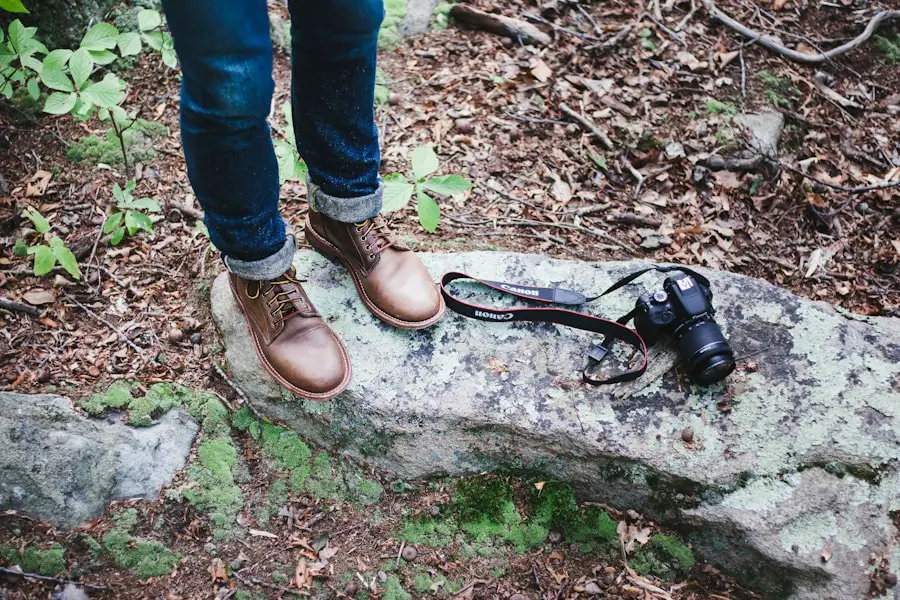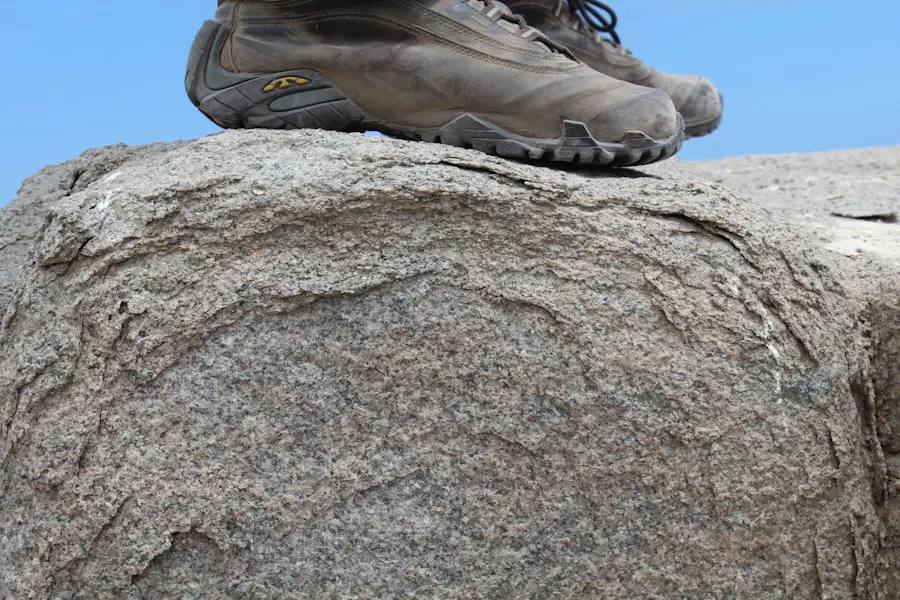When embarking on a hiking adventure, one of the most critical decisions you will make is selecting the right pair of hiking boots. The importance of proper sizing cannot be overstated, as it directly impacts your comfort and performance on the trail. Hiking boot sizing can be perplexing for beginners, especially given the variations in brands, styles, and even regional sizing standards.
Unlike regular shoes, hiking boots are designed to accommodate specific activities and terrains, which means that understanding how to choose the right size is essential for an enjoyable outdoor experience. To begin with, it’s important to recognize that hiking boots are typically sized in whole and half sizes, similar to regular footwear. However, the fit can vary significantly between different manufacturers.
For instance, a size 10 in one brand may feel entirely different from a size 10 in another. This discrepancy arises from differences in design, materials, and intended use. Therefore, it is advisable to try on multiple brands and styles to find the best fit for your foot shape.
Additionally, many brands offer wide or narrow options, which can further influence how a boot fits. Understanding these nuances will help you navigate the often-confusing world of hiking boot sizing.
Key Takeaways
- Understanding hiking boot sizing is crucial for a comfortable and enjoyable hiking experience.
- Proper fit is essential to avoid common foot problems such as blisters and discomfort.
- Different types of hiking boots require different sizing considerations, so it’s important to know the differences.
- Tips for measuring your feet accurately will help you find the right size every time you shop for hiking boots.
- When trying on hiking boots, look for proper fit, support, and comfort to ensure a good match for your feet.
The Importance of Proper Fit: Avoiding Common Foot Problems
A proper fit is paramount when it comes to hiking boots, as an ill-fitting pair can lead to a host of foot problems that can ruin your outdoor experience. Blisters are perhaps the most common issue hikers face, often resulting from friction between the foot and the boot. When boots are too tight, they can cause excessive rubbing, leading to painful blisters that can hinder your ability to continue your hike.
Conversely, boots that are too loose can allow your foot to slide around inside, creating similar friction points that result in discomfort. Beyond blisters, improper fit can lead to more serious issues such as plantar fasciitis or even stress fractures. A boot that does not provide adequate arch support or cushioning can place undue stress on your feet and joints, particularly during long hikes or on uneven terrain.
Furthermore, a poor fit can exacerbate existing foot conditions like bunions or flat feet. By ensuring that your hiking boots fit correctly from the outset, you can avoid these common pitfalls and enjoy your time on the trail without the distraction of foot pain.
Different Types of Hiking Boots: Sizing Considerations for Each

Hiking boots come in various types, each designed for specific activities and terrains. Understanding these distinctions is crucial when considering sizing. For example, lightweight hiking shoes are typically more flexible and may require a snugger fit to provide adequate support during fast-paced hikes or trail running.
These shoes often have less cushioning than traditional hiking boots, so finding the right size is essential to ensure comfort over longer distances. On the other hand, backpacking boots are generally heavier and more rigid, designed to support the weight of a loaded pack over rugged terrain. These boots often require a bit more room in the toe box to accommodate swelling that occurs during long hikes.
Additionally, mountaineering boots are built for extreme conditions and may have a different sizing standard altogether due to their specialized design for crampons and other gear. Each type of boot has its own sizing considerations based on its intended use, making it vital to understand what you need before making a purchase.
Tips for Measuring Your Feet: Getting the Right Size Every Time
| Measurement | Size (inches) |
|---|---|
| Length | 9.25 |
| Width | 3.5 |
| Arch Length | 8.75 |
| Heel-to-Ball Length | 9.5 |
Measuring your feet accurately is a fundamental step in finding the right hiking boot size. To begin this process, you will need a few simple tools: a piece of paper, a pencil, and a ruler or measuring tape. Start by placing the paper on a flat surface and standing on it with your heel against a wall or straight edge.
Trace around your foot carefully, ensuring that you capture the outline accurately. Once you have your foot traced, measure the length from the heel to the longest toe using your ruler or measuring tape. It’s also important to measure both feet, as many people have one foot that is slightly larger than the other.
When determining your size, always go with the larger measurement to ensure comfort. Additionally, consider measuring your feet at different times of the day; feet tend to swell throughout the day due to activity and heat. By taking these factors into account and measuring correctly, you can significantly increase your chances of finding a well-fitting pair of hiking boots.
Trying on Hiking Boots: What to Look for in a Proper Fit
Once you have determined your size based on measurements, it’s time to try on some hiking boots. When trying on boots, wear the same type of socks you plan to use while hiking; this will give you a more accurate sense of how they will fit during actual use. Begin by loosening all laces and sliding your foot into the boot.
Your heel should fit snugly against the back of the boot without lifting when you walk or shift your weight. As you walk around in the boots, pay attention to how they feel in various areas of your foot. There should be enough room in the toe box for your toes to wiggle slightly without feeling cramped; ideally, you should be able to fit about a thumb’s width between your longest toe and the front of the boot when standing upright.
Additionally, check for any pressure points or areas where the boot feels too tight; these could lead to discomfort during long hikes. A proper fit should feel secure yet comfortable without any pinching or excessive movement.
Sizing Differences Between Men’s and Women’s Hiking Boots

Design Considerations
Generally speaking, women’s hiking boots are designed with a narrower heel and a wider toe box compared to men’s boots. This design consideration accounts for anatomical differences between male and female feet; women typically have a lower volume foot shape than men.
Unique Features
Women’s hiking boots may also feature different cushioning and support systems designed to accommodate differences in weight distribution and biomechanics during movement. For instance, women tend to carry their weight differently than men due to variations in body composition and muscle distribution.
Importance of Trying On
As a result, it’s crucial for female hikers to try on women-specific models rather than simply opting for smaller sizes in men’s boots. Understanding these differences can help ensure that both men and women find a comfortable and supportive fit tailored to their unique foot shapes.
Breaking in Your New Hiking Boots: How to Ensure Comfort on the Trail
After purchasing new hiking boots, breaking them in properly is essential for achieving maximum comfort on the trail. New boots often require some time to mold to the shape of your feet; this process helps prevent blisters and discomfort during longer hikes. Start by wearing your new boots around the house or during short walks to allow them to flex and adjust without putting too much strain on your feet.
Gradually increase the duration and intensity of wear over several days or weeks before embarking on longer hikes. This incremental approach allows your feet to adapt while giving you an opportunity to identify any potential pressure points or areas that may need adjustment. If you notice any discomfort during this break-in period, consider using thicker socks or adding insoles for additional cushioning and support.
By taking these steps, you can ensure that your new hiking boots become comfortable companions on all your outdoor adventures.
When to Seek Professional Help: Getting Fitted by a Hiking Boot Expert
While many hikers successfully find their ideal boot size through self-measurement and trial-and-error methods, there are times when seeking professional help is advisable. If you have specific foot conditions such as flat feet, high arches, or previous injuries that affect how you walk or stand, consulting with a fitting expert can provide invaluable insights into which boot styles will best accommodate your needs. Professional fitters possess extensive knowledge about various brands and models and can offer personalized recommendations based on your unique foot shape and intended use.
They often have specialized tools for measuring foot dimensions accurately and can assess gait patterns that may influence boot selection. Additionally, many outdoor retailers offer fitting services where trained staff can guide you through trying on different styles while providing expert advice tailored specifically for you. Seeking professional help can ultimately save time and enhance comfort on your hiking journeys by ensuring that you find the perfect pair of boots suited for your adventures ahead.
When it comes to finding the perfect fit for hiking boots, it’s important to consider the specific needs of your feet and the terrain you’ll be tackling. One helpful resource to check out is an article on the best waterproof sneakers for travel, which offers insights on how to choose footwear that will keep your feet dry and comfortable during outdoor adventures. This article can provide valuable tips on selecting the right hiking boots that will support your feet and provide the necessary protection for various types of terrain.
Love travel? Join Our Facebook Community
FAQs
What are the key factors to consider when fitting hiking boots?
When fitting hiking boots, it’s important to consider the length, width, and volume of the boot, as well as the overall comfort and support it provides.
How should hiking boots fit in terms of length?
Hiking boots should have a snug fit with a little bit of room in the toe box to allow for natural foot swelling during long hikes. Your toes should not touch the front of the boot when standing or walking.
What about the width of hiking boots?
Hiking boots should provide a comfortable fit without feeling too tight or too loose. Your foot should feel secure and supported without any pinching or rubbing.
What is the importance of the volume of hiking boots?
The volume of hiking boots refers to the amount of space inside the boot. It’s important to ensure that the boot provides enough volume to accommodate your foot shape and any necessary orthotic inserts.
How should hiking boots feel in terms of overall comfort and support?
Hiking boots should feel comfortable and supportive, providing stability and cushioning for your feet. They should also offer good ankle support and a secure fit to prevent blisters and injuries.
What are some common signs of an ill-fitting hiking boot?
Common signs of an ill-fitting hiking boot include heel slippage, toe jamming, hot spots, blisters, and overall discomfort. It’s important to address these issues by finding a better-fitting boot.
